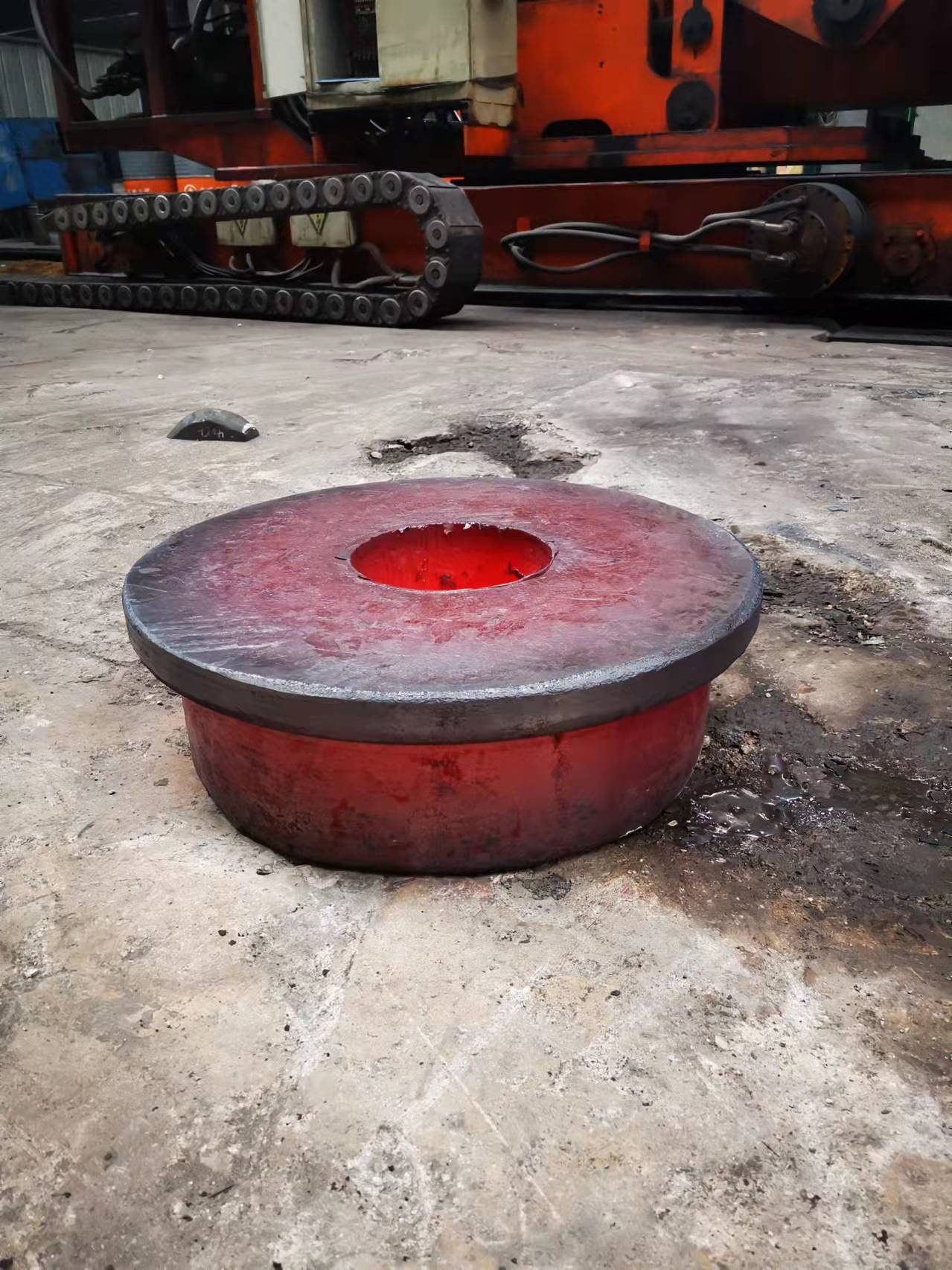Why do large forgings undergo heat treatment after forging
2022-06-17
Post-forging heat treatment of large forgings, also known as the first heat treatment or preparatory heat treatment, is usually carried out immediately after the completion of the forging process. Its main objectives are:
1. Eliminate forging stress, reduce the surface hardness of forgings, improve its cutting performance, which is the most direct and primary purpose of post-forging heat treatment.
2 for no final heat treatment (or product heat treatment) forgings, through post-forging heat treatment should also make the forgings meet the requirements of the technical conditions of the product performance indicators. Most of these forgings belong to forgings made of carbon steel or low alloy steel.
3. Adjust and improve the overheat and coarse structure formed by large forgings in the forging process, reduce the inhomogeneity of chemical composition and metallographic structure of large forgings, refine the austenite grain of steel; Improve the ultrasonic inspection performance of forgings, eliminate grass wave, so that all kinds of internal defects in forgings can be clearly displayed, in order to eliminate unqualified forgings transfer to the next process.
4. For all kinds of important large forgings, in the formulation of post-forging heat treatment process, the first consideration must be to prevent and eliminate the white spot problem. Therefore, it is necessary to know the results of hydrogen sampling at the risers of the large steel ingot for the forging, which can be used as the data of the average hydrogen content in the steel, and then determine the necessary dehydrogenation annealing time by hydrogen expansion calculation of the large forgings to ensure that there is no white spot defect in the forging, and arrange it in the process of post-forging heat treatment.
This is the most important problem that must be solved first when developing the heat treatment process of large forgings after forging. It must be done effectively so as not to scrap the forgings because of white spots.
5. For large forgings made of molten steel after one or two vacuum treatments, if the value of hydrogen sampled at the ingot riser is lower than the non-white limit hydrogen content of the forgings, the problem of dehydrogenation can not be considered in the formulation of post-forging heat treatment process. However, if the forgings to eliminate steel to hydrogen embrittlement or to the value of residual hydrogen content in steel have specific provision, in making the after forged heat treatment process, is still going through diffusion hydrogen calculate and determine the necessary hydrogen annealing time, and give an elaborate plan, to ensure that meet the design drawings and relevant technical documents for large forgings under various requirements.
1. Eliminate forging stress, reduce the surface hardness of forgings, improve its cutting performance, which is the most direct and primary purpose of post-forging heat treatment.
2 for no final heat treatment (or product heat treatment) forgings, through post-forging heat treatment should also make the forgings meet the requirements of the technical conditions of the product performance indicators. Most of these forgings belong to forgings made of carbon steel or low alloy steel.
3. Adjust and improve the overheat and coarse structure formed by large forgings in the forging process, reduce the inhomogeneity of chemical composition and metallographic structure of large forgings, refine the austenite grain of steel; Improve the ultrasonic inspection performance of forgings, eliminate grass wave, so that all kinds of internal defects in forgings can be clearly displayed, in order to eliminate unqualified forgings transfer to the next process.
4. For all kinds of important large forgings, in the formulation of post-forging heat treatment process, the first consideration must be to prevent and eliminate the white spot problem. Therefore, it is necessary to know the results of hydrogen sampling at the risers of the large steel ingot for the forging, which can be used as the data of the average hydrogen content in the steel, and then determine the necessary dehydrogenation annealing time by hydrogen expansion calculation of the large forgings to ensure that there is no white spot defect in the forging, and arrange it in the process of post-forging heat treatment.
This is the most important problem that must be solved first when developing the heat treatment process of large forgings after forging. It must be done effectively so as not to scrap the forgings because of white spots.
5. For large forgings made of molten steel after one or two vacuum treatments, if the value of hydrogen sampled at the ingot riser is lower than the non-white limit hydrogen content of the forgings, the problem of dehydrogenation can not be considered in the formulation of post-forging heat treatment process. However, if the forgings to eliminate steel to hydrogen embrittlement or to the value of residual hydrogen content in steel have specific provision, in making the after forged heat treatment process, is still going through diffusion hydrogen calculate and determine the necessary hydrogen annealing time, and give an elaborate plan, to ensure that meet the design drawings and relevant technical documents for large forgings under various requirements.
Finally, it is introduced that intermediate annealing during forging process can spherify and disperse sulfide inclusions in steel, which is beneficial to improve the transverse properties (mainly impact toughness) of large forgings.

X
We use cookies to offer you a better browsing experience, analyze site traffic and personalize content. By using this site, you agree to our use of cookies.
Privacy Policy



